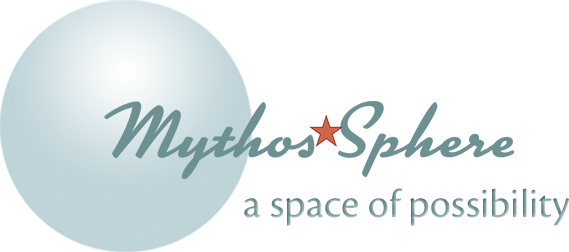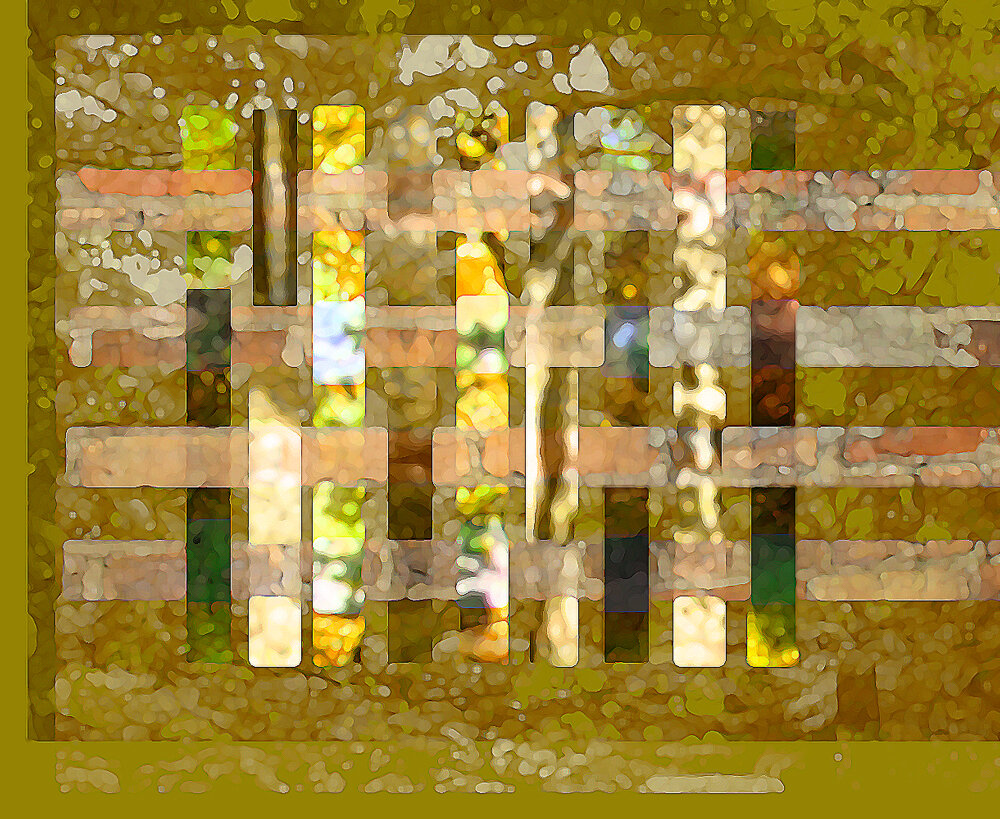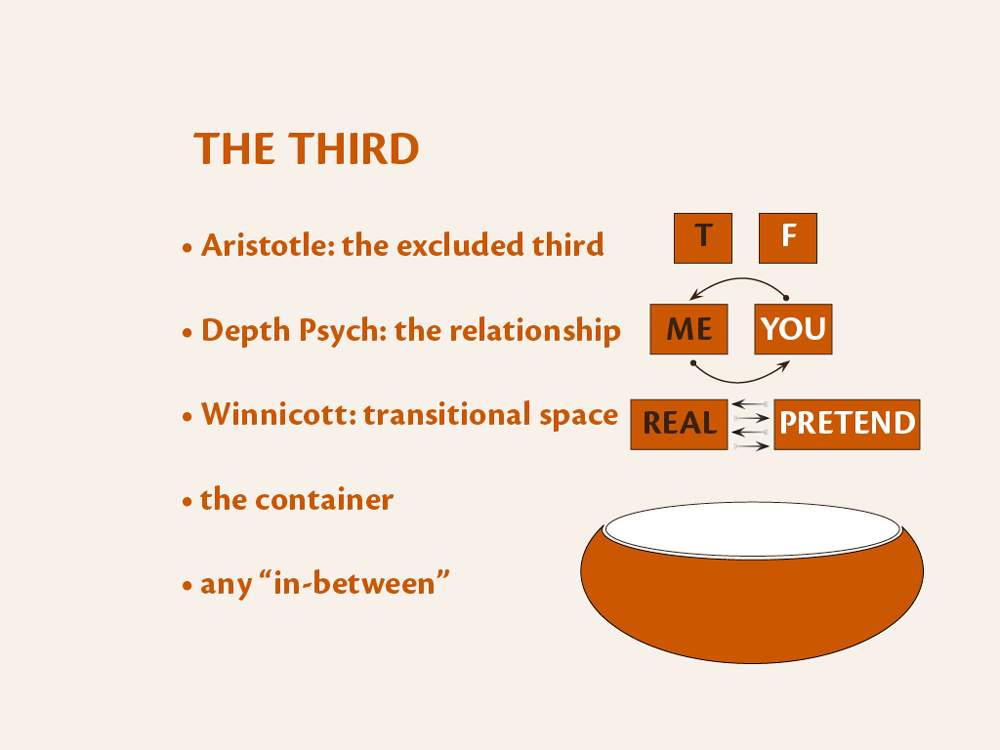The In-Between
What if there is a disconnect between my inner experience and my social experience? What if the person I am inside seems too different from the person I am in the world? What if I just don’t belong?
Paradoxically, encouraging the space between us, often called the third, supports both self-expression and community. This is where we can negotiate…explore…entertain possibilities…without abandoning ourselves. The third is the space where we can be both alike and different—where we are individuals and members of the group.
There are many different understandings of the third.
In philosophy, the idea of the excluded third extends from Aristotle’s principle of non-contradiction: of two contradictory propositions, one must be true and the other false; no third possibility is given.
In depth psychology, the third is often thought of as the relationship between self and other.
As used by Winnicott, it is the area between “real” and “pretend.” Between real and pretend, it is both and neither. It is often called “transitional space” or the space of possibility. It is the space of play, magic, and not knowing.
The third is also thought of as the container holding that space.
Experience in the third—the space of possibility— is characterized by ambiguity. Is it you or me? We don’t know. Is it real or pretend? We don’t know. Is it a great idea or a silly one? We don’t know, and we don’t need to know. We just explore. We just play. This is where creativity happens.
In the third, paradox is not forced to resolution. When parameters of “true/false” thinking are relaxed, we can move beyond what we know. Beyond normal limits, transcendent solutions can arise.
Each one of us—every single one—is like others and different from others. We can celebrate that experience in the spaciousness of the third. Where we don’t have to choose between being either alike or different, we can be both.


